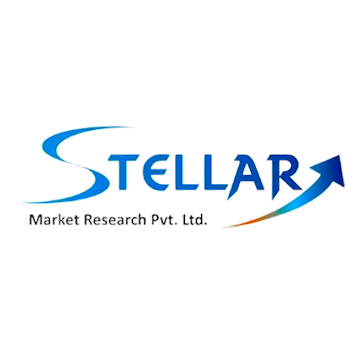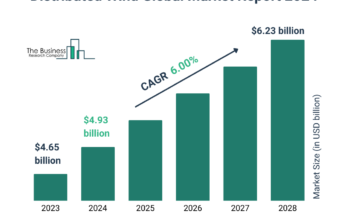Distributed Energy Resource Management System Market Overview
The Global Distributed Energy Resource Management System (DERMS) market was valued at USD 390.60 million in 2023 and is projected to reach USD 1432.58 million by 2030, growing at a robust CAGR of 20.4% during the forecast period from 2024 to 2030. DERMS enable the management and optimization of distributed energy resources (DERs) across a variety of power generation sources such as solar, wind, natural gas, and storage systems. As the world transitions toward renewable energy and decarbonization, DERMS play a critical role in integrating renewable resources, improving grid stability, and enhancing energy efficiency.
Market Scope and Drivers
The expansion of DERMS is primarily driven by the global push for renewable energy adoption, coupled with decreasing costs for solar and wind energy, as well as advancements in energy storage technologies. Government mandates, such as renewable energy targets and carbon emission reductions, further stimulate market growth. Additionally, with the increase in energy consumption and the rise of smart grid technologies, DERMS offer an effective solution for utilities to manage distributed energy assets and optimize energy distribution.
For in-depth insights and a detailed competitive analysis, request a free sample report today:https://www.stellarmr.com/report/req_sample/Distributed-Energy-Resource-Management-System-Market/303
Key Market Drivers
- Renewable Energy Policies: The transition towards renewable energy, including wind, solar, and energy storage solutions, is a significant driver for DERMS. Governments across the world are setting ambitious targets to reduce carbon emissions, which fosters the adoption of distributed energy resources and subsequently DERMS.
- Declining Costs of Renewable Technologies: The falling costs of solar photovoltaics and wind energy systems are contributing to the wider deployment of renewable energy, which requires sophisticated management solutions like DERMS.
- Regulatory Support and Financial Incentives: Increasing regulatory frameworks and financial incentives for renewable energy projects, particularly in the form of Feed-in Tariffs (FITs) and subsidies, promote the integration of DERMS into the global energy market.
- Grid Stability and Automation: The shift towards a more decentralized grid calls for improved automation and smart technologies, such as AI-enabled monitoring and advanced metering, which enhance the ability to integrate intermittent renewable energy sources with existing grids.
Market Trends
- Growing Demand for Energy Storage: Battery storage systems are increasingly being integrated with DERs to optimize energy usage during grid disruptions, especially during peak demand or low renewable output periods.
- Integration of AI and IoT: Artificial intelligence and Internet of Things (IoT) technologies are being incorporated into DERMS for real-time monitoring, predictive analytics, and automated decision-making, further enhancing grid reliability and efficiency.
- Shift Towards Low-Voltage Networks: A high degree of automation and distributed intelligence is expected to transform low-voltage networks, helping utilities handle the volatility associated with renewable energy sources.
Segmentation of the Distributed Energy Resource Management System Market
- By Technology:
- Solar Photovoltaic (PV): The solar PV segment is expected to witness significant growth due to the resilience and scalability of distributed PV systems, particularly during grid disruptions. This segment is forecasted to grow at a CAGR of 21.9% during the forecast period.
- Wind Turbines: As a leading source of renewable energy, wind turbines continue to be a key part of the DERMS ecosystem, contributing to grid stability and energy diversification.
- Reciprocating Engines, Fuel Cells, Gas & Steam Turbines: These technologies offer flexibility and quick-response capabilities, supporting grid operations during fluctuating energy demands.
- By Application:
- Residential: Dominating the market with a 48.3% share in 2023, residential applications of DERMS are increasingly popular, driven by the desire for energy independence and cost savings through solar and battery storage solutions.
- Commercial and Industrial: These sectors are expected to grow substantially due to increasing energy demand, the need for more efficient energy management, and the push toward sustainability goals.
For in-depth insights and a detailed competitive analysis, request a free sample report today:https://www.stellarmr.com/report/req_sample/Distributed-Energy-Resource-Management-System-Market/303
Regional Insights
- North America: North America held the largest market share in 2023 with 43%, driven by regulatory pressure for decarbonization and the growing demand for energy-efficient solutions.
- Asia Pacific: This region is projected to grow at a CAGR of 19.3%, supported by rapid urbanization, industrialization, and an increasing demand for energy in countries like China, India, and Southeast Asia.
Key Players in the Market
The market is characterized by the presence of several key players, including:
- ABB Ltd. (Switzerland)
- Siemens (Germany)
- Schneider Electric (France)
- General Electric (US)
- Emerson (US)
- Autogrid Systems, Inc. (US)
- Doosan Gridtech (US)
- Blue Pillar (US)
These companies are involved in offering advanced DERMS technologies, energy management solutions, and smart grid integration, contributing to the overall growth and innovation within the market.
Key Questions Answered
- What are the key drivers of the DERMS market?
- The key drivers include renewable energy adoption, government regulations, decreasing costs of solar and wind energy technologies, and the increasing need for grid stability.
- Which regions are expected to lead the market?
- North America currently leads the market, with Asia Pacific poised to witness significant growth in the coming years.
- What technological advancements are shaping the DERMS market?
- AI, IoT, and energy storage technologies are increasingly being integrated to optimize DER management and enhance grid efficiency.
- What are the challenges hindering market growth?
- High initial investment and operational costs, as well as the complexity of integrating DERs with existing grid infrastructure, are notable challenges.
In conclusion, the Distributed Energy Resource Management System market is set for robust growth, driven by the global transition towards renewable energy, advancements in smart grid technologies, and increasing regulatory support for clean energy. As the market expands, companies focusing on innovation, cost-effective solutions, and integration of renewable technologies are well-positioned for success in this dynamic industry.
For more insights, detailed analysis, and a free sample report, visit:https://www.stellarmr.com/report/Distributed-Energy-Resource-Management-System-Market/303
Key Offerings:
- Past Market Size and Competitive Landscape (2018 to 2022)
- Past Pricing and price curve by region (2018 to 2022)
- Market Size, Share, Size & Forecast by Different Segment | 2024-2030
- Market Dynamics – Growth Drivers, Restraints, Opportunities, and Key Trends by Region
- Market Segmentation – A detailed analysis by segment with their sub-segments and Region
- Competitive Landscape – Profiles of selected key players by region from a strategic perspective
- Competitive landscape – Market Leaders, Market Followers, Regional player
- Competitive benchmarking of key players by region
- PESTLE Analysis
- PORTER’s analysis
- Value chain and supply chain analysis
- Legal Aspects of Business by Region
- Lucrative business opportunities with SWOT analysis
- Recommendations
For More Information:
Sealant Market https://www.stellarmr.com/report/sealant-market/2399
Military Simulation and Virtual Training Market https://www.stellarmr.com/report/military-simulation-and-virtual-training-market/2400
Plate and Frame Heat Exchangers Market https://www.stellarmr.com/report/plate-and-frame-heat-exchangers-market/2402
Craft Beer Market https://www.stellarmr.com/report/craft-beer-market/2409
AI in Oncology Market https://www.stellarmr.com/report/ai-in-oncology-market/2410
About Stellar Market Research:
Stellar Market Research is a multifaceted market research and consulting company with professionals from several industries. Some of the industries we cover include medical devices, pharmaceutical manufacturers, science and engineering, electronic components, industrial equipment, technology and communication, cars and automobiles, chemical products and substances, general merchandise, beverages, personal care, and automated systems. To mention a few, we provide market-verified industry estimations, technical trend analysis, crucial market research, strategic advice, competition analysis, production and demand analysis, and client impact studies.
Contact Stellar Market Research:
S.no.8, h.no. 4-8 Pl.7/4, Kothrud,
Pinnac Memories Fl. No. 3, Kothrud, Pune,
Pune, Maharashtra, 411029




